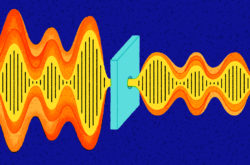Illustration: Cathryn Virginia
From Biz Markie’s infamous court case for the song “Alone Again” to current artists sampling soul records, movie quotes, and more, sampling is a favorite technique among producers and music fans alike.
The “sampled sound” has been extremely prevalent in popular music for the past several decades. But how do you achieve this coveted sound? And what are some techniques you can use to make your samples special?
Understanding the roots
In the 80s and 90s, most of the sampling that occurred was in hip hop. By understanding the workflow, you can better understand how artists achieved the sound.
It all starts with a spin
Many hip hop producers during this time were working with vinyl records, Akai MPC drum machines, and keyboard workstations. They would spend hours in the studio listening back to old soul and R&B records, searching for the perfect sample to flip. While it may have taken an entire day to find, they knew when they heard it.
From there, they would load it into their hardware sampler of choice and start manipulating. By loading it onto pads or a keyboard, they were able to give it the ‘chopped’ and ‘pitched’ sounds quite easily. All that’s left was to build a track around the sample.
The modern method
While the tools have changed, the same concepts apply to sampling today. It’s all about searching for the perfect sample, chopping it up in a creative way, and building a track around it.
On the searching front, Splice Sounds has made the process undeniably easier and just… better. Having over a million samples at your fingertips and being able to search, save, and use these samples instantly makes it easier than ever to find the perfect sample.
Depending on your DAW of choice, laying out the sample on some pads or keys is also incredibly easy. Read how to do this in Logic here.
In Ableton Live, it’s just as easy. Simply right click on an audio region that has “Warp” turned on and click “Slice to New MIDI Track” – this will bring up a dialog menu allowing you to choose exactly how you’d like to slice up your sample.
Characteristics of the sampled sound
Now that we understand where this sound comes from and the modern workflows for achieving it, let’s discuss the key characteristics of this style of production.
Play with the pitch
Pitching samples up or down is a very popular sound and is a great way to add a new flair to a sample. The chipmunk sound is probably the most common and is achieved by transposing a vocal up, usually by at least six semitones. Additionally, if you’re working with a vocal sample, you can play with the formant knob to give it more or less of the chipmunk sound.
Leave some space
Another key characteristic is space or gaps in the sample. By treating the sample as an instrument in itself, you get a very cool ‘choppy’ sound. Common’s “The Corner” is a great example of this. The vocal sample is used sparsely but extremely effectively to create a great sampled sound. Even if your sample is playing for the entire loop, having some rhythmic chop parts can give it a great groove – don’t be afraid of the gaps!
Warp and distort
Not all samples are created equal. While some are recorded in high quality audio, it’s not always what you want. You may want to consider using tools like a bitcrusher, vinyl emulator, distortion, phaser, filter, or tape emulator to achieve the sound you’re looking for. This is because, as we discussed earlier, a lot of the early samples actually came from these mediums in the first place, so low quality sampling has become part of the sound.
Don’t be afraid to experiment
As with almost all artistic creation, sampling is about experimentation and trying anything and everything until you find the magic. Try using different tools, methods, and ideas until you find just the right thing.
Find inspiration with our new sample discovery feature:
April 16, 2018



